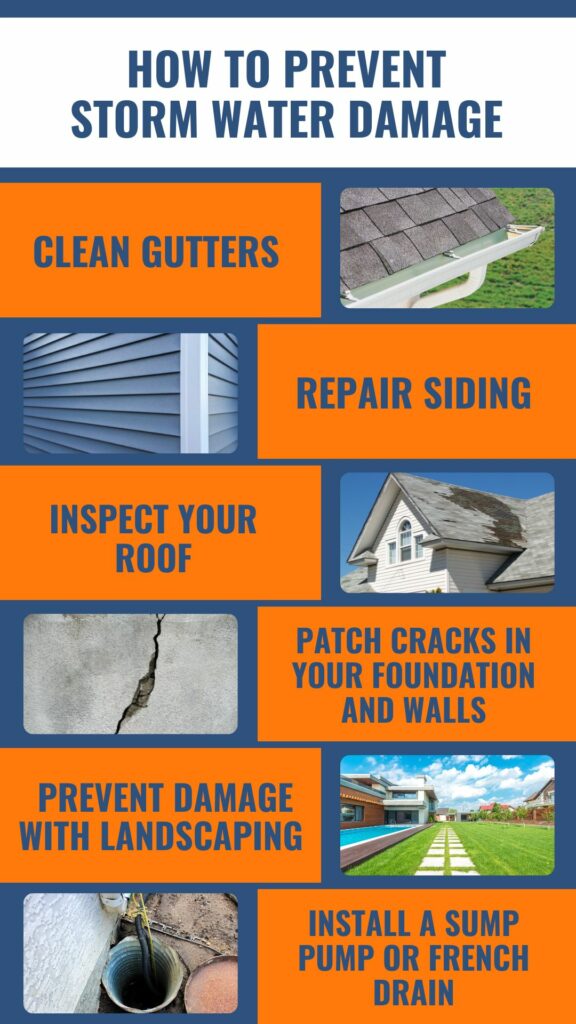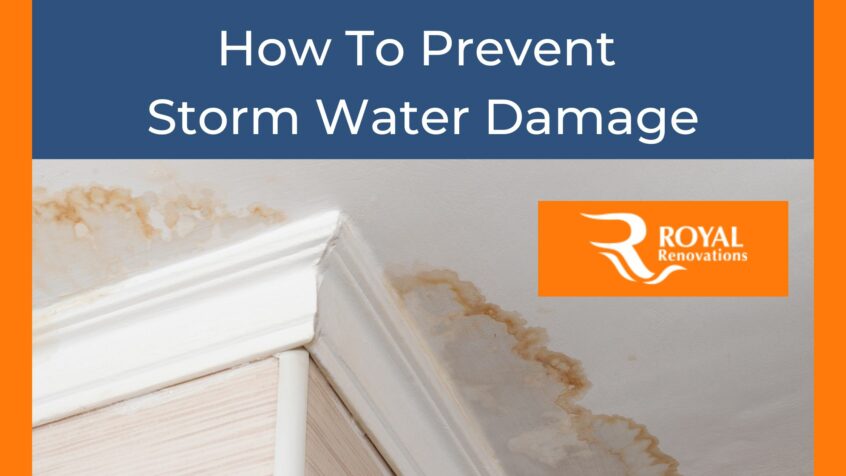As winter turns into spring, homeowners should be prepared for more rain and storm conditions. These conditions can cause storm water damage if you don’t take steps to prevent it. Luckily, we have some great tips for homeowners about storm damage prevention.

Address Your Gutters and Siding
You can often avoid the need for water and storm damage restoration by cleaning your gutters. Gutters direct the flow of water from your roof away from your home, but over time they can get clogged. If your gutters have debris like leaves, ice dams, and other buildup, water can spill down your walls and collect near the foundation. As a result, your foundation will deteriorate. This deterioration may lead to a potential flood as water slips through the cracks.
Another important part of storm damage prevention is your siding. Siding acts as a protective layer, shielding your home from wind, rain, and other elements. If your siding is damaged or deteriorating, it will be more susceptible to water damage and flooding during a storm. Water can seep through cracks in the siding, causing moisture buildup and potentially leading to mold growth or even structural damage.
Inspect Your Roof for Storm Damage
One of the most important things you can do this season is inspect your roof. Your roof is the first line of defense against the elements. Even minor damage or wear can lead to significant water damage during a storm. Over time, your roof may develop cracks and leaks, allowing water to take a toll on your home.
Patch Cracks in Your Walls and Foundation
If you have any cracks in your structural walls or foundation, spring is an important time to patch them. Even if you have an effective roof, siding, and gutters, water can still slip through these cracks. Given enough time, this water damage will eventually impact your home’s structure and stability.
Landscaping to Prevent Storm Water Damage
Landscaping may not be your first thought when you think of storm damage prevention, but it can make all the difference. It’s important that your lawn slopes away from your home, so water doesn’t pool near your foundation. There are several projects that will solve standing water.
- Grading your lawn
- Adding highly-absorbent plants
- Adding mulch or thatch
- Planting grass
Consider a Sump Pump or French Drain
For especially wet climates like Minnesota, it may be worth considering a sump pump or a French drain. Sump pumps are designed to remove excess water that collects near your basement or crawlspace. However, you only need a sump pump if you live in an area that’s prone to flooding or has a high water table.
A French drain redirects water away from a specific area, like your home’s foundation or a low-lying area of the yard. It consists of a trench filled with gravel or rock, with a perforated pipe running through the center. Depending on your needs, a French drain might be more appropriate for your home. However, you can combine this type of drain with a sump pump for the best drainage possible.
Storm and Water Damage Restoration from Royal Renovations
If you’ve experienced water damage from spring storms, the best thing to do is call a professional. Royal Renovations is a full-service restoration company serving the St. Cloud area. We can help you whether you have storm damage, water damage, or need content restoration. Get the help you need by contacting us.

